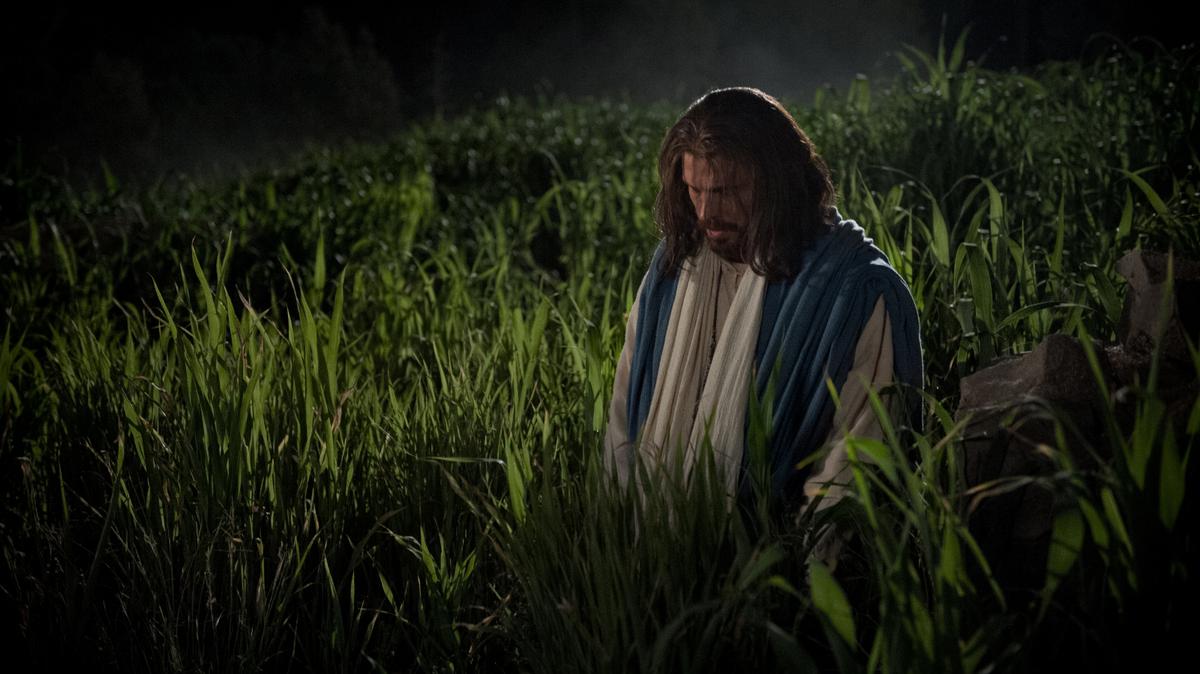Home>Theology and Spirituality>How To Teach A Child About Baptism


Theology and Spirituality
How To Teach A Child About Baptism
Published: February 26, 2024
Jason DeRose, Managing Editor at Christian.net, uses his expertise in religion and journalism to deepen understanding of faith's societal impacts. His editorial leadership, coupled with a strong academic background, enriches the platform’s diverse content, earning him recognition in both journalism and religious circles.
Discover effective ways to teach children about baptism and theology with our comprehensive guide. Explore engaging activities and resources for a meaningful learning experience. Unlock the secrets of spiritual education today!
(Many of the links in this article redirect to a specific reviewed product. Your purchase of these products through affiliate links helps to generate commission for Christian.net, at no extra cost. Learn more)
Table of Contents
Understanding the Meaning of Baptism
Baptism is a significant sacrament in Christianity, symbolizing the cleansing of sins and the initiation into the faith. It is a ritual that holds deep spiritual meaning for believers and is often considered a pivotal moment in one's religious journey. Understanding the essence of baptism is crucial in teaching children about this sacred practice. Here are some key points to consider when explaining the meaning of baptism to children:
-
Purification and Renewal: Baptism represents the purification of the soul and the renewal of one's commitment to living a life in accordance with Christian values. It serves as a symbolic cleansing, washing away sin, and marking a new beginning in the individual's spiritual life.
-
Identification with Christ: Through baptism, individuals identify with the death, burial, and resurrection of Jesus Christ. It signifies a personal connection to the life and teachings of Jesus, as well as a public declaration of faith in Him.
-
Incorporation into the Church: Baptism is also a rite of initiation into the Christian community. It signifies belonging to the body of believers and participating in the larger family of the church.
-
Sealing with the Holy Spirit: In some Christian traditions, baptism is believed to be accompanied by the bestowal of the Holy Spirit. This spiritual sealing is seen as a mark of God's acceptance and presence in the life of the baptized individual.
-
Symbol of Grace and Forgiveness: Baptism is a visible sign of God's grace and forgiveness. It serves as a reminder of God's unconditional love and the offer of salvation through faith in Jesus Christ.
Understanding these fundamental aspects of baptism can provide children with a foundational comprehension of its significance within the Christian faith. By emphasizing these core principles, parents and educators can effectively convey the profound meaning of baptism to young learners.
Read more: How To Prepare My Child For Baptism
Explaining the Importance of Baptism in Christianity
-
Salvation and Forgiveness: Baptism is considered essential for receiving salvation and the forgiveness of sins in many Christian traditions. It is viewed as the moment when an individual is cleansed of their sins and enters into a new life of grace and reconciliation with God.
-
Obedience to Christ's Command: In the Bible, Jesus instructed his followers to baptize believers in the name of the Father, the Son, and the Holy Spirit (Matthew 28:19). Therefore, baptism is seen as an act of obedience to Christ's teachings and an expression of faith in His authority.
-
Public Declaration of Faith: Baptism serves as a public declaration of one's faith in Jesus Christ. It is a visible testimony to others about the individual's decision to follow Christ and live according to Christian principles.
-
Participation in Christ's Death and Resurrection: The act of immersion in water during baptism symbolizes the believer's participation in the death, burial, and resurrection of Jesus Christ. It represents dying to the old self and being raised to a new life in Christ.
-
Unity with the Church: Baptism is a unifying factor within the Christian community. It signifies the individual's incorporation into the body of believers and their commitment to being part of the larger family of faith.
-
Reception of the Holy Spirit: In some Christian traditions, baptism is associated with the reception of the Holy Spirit. It is believed to be a moment when the Holy Spirit comes upon the baptized person, empowering them for Christian living and service.
-
Preparation for Communion: In certain denominations, baptism is a prerequisite for participating in the sacrament of communion. It is considered a foundational step before partaking in the Lord's Supper, signifying one's readiness to engage in the fellowship of believers.
Understanding the importance of baptism in Christianity is crucial for both children and adults. By grasping the significance of this sacrament, individuals can appreciate its role in shaping their spiritual identity and relationship with God.
Using Visual Aids to Teach about Baptism
Visual aids can be powerful tools for conveying the concept of baptism to children in a tangible and engaging manner. Here are some effective visual aids that can be utilized to teach children about baptism:
-
Water and Baptismal Fonts: Incorporating actual water and demonstrating the act of baptism can leave a lasting impression on children. Whether through a live demonstration or a video presentation, showing the immersion or sprinkling of water during the baptismal rite can help children visualize the significance of the sacrament.
-
Baptismal Gown and Candle: Displaying a baptismal gown and candle can help children understand the symbolic elements associated with baptism. The white gown symbolizes purity and newness of life, while the candle represents the light of Christ entering the baptized person's life.
-
Illustrations and Artwork: Utilizing visual representations such as drawings, paintings, or digital illustrations can aid in explaining the spiritual symbolism of baptism. These visual aids can depict scenes of baptism from the Bible or portray the key elements of the sacrament, making it more relatable and comprehensible for children.
-
Interactive Multimedia Presentations: Engaging children through interactive multimedia presentations, such as slideshows or videos, can enhance their understanding of baptism. These presentations can include narrations, animations, and real-life examples to illustrate the significance of baptism in a captivating and accessible format.
-
Bible Stories and Scripture Verses: Using visual aids to present relevant Bible stories and scripture verses related to baptism can help children connect the sacrament to its biblical roots. Visual storytelling through images or props can bring these narratives to life, allowing children to grasp the spiritual truths underlying baptism.
-
Symbolic Objects: Introducing symbolic objects like a dove (representing the Holy Spirit) or an olive branch (symbolizing peace and new beginnings) can visually reinforce the spiritual concepts associated with baptism. These tangible representations can serve as visual cues for children to remember the deeper meanings of the sacrament.
By leveraging visual aids, educators and parents can create a multi-sensory learning experience that resonates with children, making the concept of baptism more vivid and comprehensible. Visual elements can leave a lasting impression and facilitate a deeper understanding of the spiritual significance of baptism in the Christian faith.
Incorporating Stories and Examples to Illustrate the Concept of Baptism
Incorporating stories and examples is a compelling approach to elucidate the concept of baptism for children, as narratives have the power to captivate young minds and convey profound truths in a relatable manner. By weaving stories and real-life examples into the teaching of baptism, educators and parents can effectively illustrate the significance of this sacrament and its impact on the lives of believers. Here are several ways to incorporate stories and examples to bring the concept of baptism to life for children:
-
Biblical Accounts of Baptism: Sharing stories from the Bible, such as the baptism of Jesus in the Jordan River by John the Baptist, can provide a foundational understanding of the origins of baptism. Exploring the biblical narratives surrounding baptism can help children grasp its spiritual significance and the role it played in the life of Jesus and early Christian communities.
-
Personal Testimonies: Introducing personal testimonies of individuals who have been baptized can offer real-life examples of how baptism has influenced their faith journey. Hearing firsthand accounts of how baptism has impacted the lives of others can resonate with children and demonstrate the personal significance of this sacrament.
-
Historical and Cultural Context: Exploring historical and cultural examples of baptism practices across different Christian traditions can broaden children's perspectives. Learning about diverse baptismal customs and their meanings in various cultures can foster an appreciation for the rich heritage and global significance of this sacred rite.
-
Parables and Analogies: Utilizing parables and analogies that parallel the concept of baptism can help children grasp its spiritual symbolism. For instance, the parable of the prodigal son can be used to illustrate the themes of repentance, forgiveness, and restoration, which are also reflected in the act of baptism.
-
Symbolic Objects and Visual Demonstrations: Incorporating tangible objects and visual demonstrations, such as using a water basin and a white cloth to simulate baptism, can provide a hands-on experience for children. Engaging their senses through interactive demonstrations can reinforce the symbolic nature of baptism and make the concept more tangible.
-
Relatable Stories of Transformation: Sharing stories of individuals who experienced personal transformation and renewal through baptism can exemplify its profound impact. These narratives can highlight the spiritual rebirth and the sense of belonging that baptism brings, resonating with children on an emotional level.
By integrating stories and examples into the teaching of baptism, children can gain a deeper understanding of its spiritual significance and relevance in the lives of believers. These narratives and real-life illustrations can foster a sense of connection and empathy, enabling children to appreciate the profound meaning of baptism within the Christian faith.
Addressing Common Questions and Misconceptions about Baptism
Addressing common questions and misconceptions about baptism is essential in providing clarity and understanding for children. By addressing these inquiries and dispelling misconceptions, educators and parents can ensure that children have a well-rounded comprehension of this significant sacrament. Here are some common questions and misconceptions about baptism, along with explanations to address them:
Read more: How To Teach Kids About Advent
Common Questions about Baptism
-
Why do people get baptized?
- Baptism is a public declaration of one's faith in Jesus Christ and a symbolic representation of spiritual cleansing and rebirth. It is an act of obedience to Christ's command and a way for individuals to publicly profess their commitment to following Him.
-
Can anyone be baptized?
- In Christianity, baptism is typically reserved for individuals who have made a personal decision to follow Christ. It is a voluntary expression of faith and is often administered to those who have consciously chosen to embrace the Christian belief.
-
What happens during a baptism ceremony?
- A baptism ceremony often involves the use of water, symbolizing the washing away of sins and the beginning of a new life in Christ. Depending on the Christian tradition, baptism may be performed through immersion, pouring, or sprinkling of water, accompanied by prayers and blessings.
-
Is baptism necessary for salvation?
- Different Christian denominations hold varying beliefs regarding the salvific role of baptism. While some view baptism as essential for salvation, others emphasize faith in Jesus Christ as the primary requirement for salvation, with baptism serving as an outward expression of that faith.
Misconceptions about Baptism
-
Baptism guarantees automatic entry into heaven.
- While baptism is a significant sacrament, it is not a guarantee of salvation or automatic entry into heaven. Salvation is based on faith in Jesus Christ and His redemptive work, and baptism serves as a public affirmation of that faith.
-
Baptism erases all past mistakes and ensures a perfect life thereafter.
- Baptism signifies the forgiveness of sins and the beginning of a new life, but it does not exempt individuals from facing challenges or making mistakes in the future. It is a spiritual milestone, but the journey of faith involves ongoing growth and transformation.
-
Baptism is only for adults who have sinned and need to be forgiven.
- While adult baptism is common, many Christian traditions also practice infant baptism, which is based on the belief in God's grace and the incorporation of children into the faith community. Baptism is not solely about forgiveness but also about initiation into the Christian faith.
-
Baptism has no significance beyond a ceremonial ritual.
- Baptism holds deep spiritual significance beyond being a mere ritual. It symbolizes the believer's identification with Christ, incorporation into the body of believers, and the reception of the Holy Spirit, signifying a profound spiritual transformation.
By addressing these common questions and misconceptions, children can develop a clearer understanding of the multifaceted nature of baptism and its role within the Christian faith. Open dialogue and thoughtful explanations can help children navigate the complexities surrounding baptism, fostering a deeper appreciation for its spiritual significance.














